Tech
mclaren unveils W1, by far its fastest road-legal hybrid supercar with teardrop-shaped cabin

hybrid supercar W1 by mclaren comes with 3D printed parts
McLaren reveals its fastest road-legal, hybrid supercar yet named W1. It has an electric motor combined with its V8 combustion engine, allowing it to produce a total of 1,275 horsepower, which is more than any other McLaren model so far. It means that it takes the vehicle 2.7 seconds to go from a standstill to 100 km/h, and it can even get to 300 km/h in less than 12.7 seconds. Its frame is made up of carbon fiber structures to help the total dry weight of the hybrid supercar amount to 1,399 kilos. The McLaren W1 also comes with active aerodynamic parts for the airflow and car stability as it speeds away, and these include movable parts like the flaps or spoilers.
McLaren even uses 3D printing to make some of the suspension components, like the uprights and wishbones, or the parts that connect the wheels to the car’s chassis, which can help keep the car’s weight down. The use of the 3D-printed parts arises from the car manufacturer’s Formula 1 technology, bringing in as well the use of titanium in some components of the W1 to make it lighter and more responsive on the road during driving. With W1, McLaren also debuts its ‘Anhedral’ doors, having them lifted upwards by the users when they enter and exit like gull-wing doors.
all images courtesy of McLaren
Button placements inspired by Formula 1 racing technology
Inside the McLaren W1 hybrid supercar, there’s ample space for both the driver and passenger, which the car manufacturer says is unusual for many sports cars. It has narrow A-pillars, or the columns that frame the windshield, as well as glazed glass sections in the rear. There are also optional glass panels in the upper door in case the owner wants to let more light in and have a more open, airy feel in the cabin. The seats are part of the car’s carbon fiber monocoque, and they’re reclined with extra thigh support to make long drives and high-speed racing comfortable.
The steering wheel is smaller and flatter compared to previous McLaren designs, and it even includes shift lights to help the driver know when to change gears at high speeds. The steering wheel only has two buttons: Boost for extra power and Aero Deployment for managing the car’s aerodynamics, both of which are placed near the thumb of the driver, inspired by Formula 1 racing technology. The driver’s display also moves with the steering wheel to make sure that the driver always has a clear view of driving information, even with the smaller steering wheel.
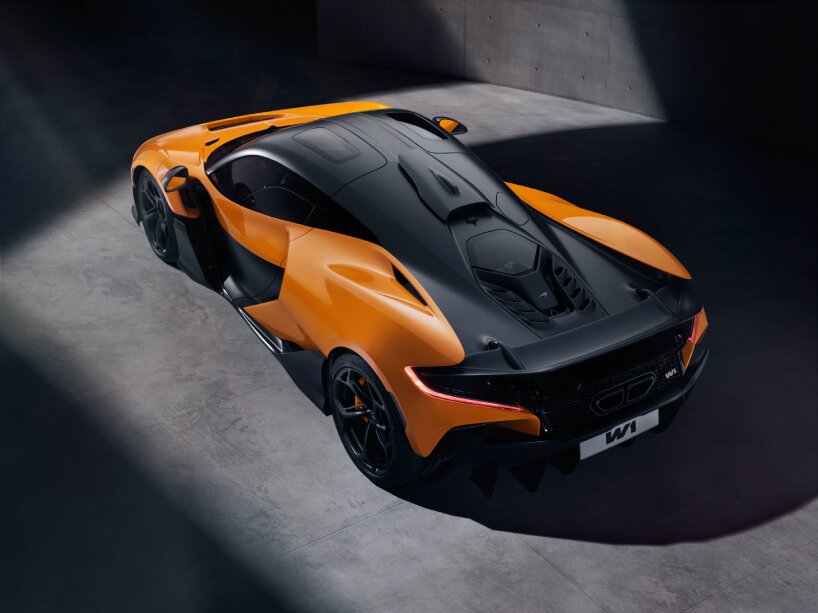
McLaren reveals its fastest road-legal, hybrid supercar yet named W1
McLaren W1 hybrid supercar’s layered bodywork
There are overhead controls in the McLaren W1 hybrid supercar, such as the start/stop button, gear selection, and Race mode switch, and they’re positioned just above the driver. The supercar even has a digital rear-view mirror with a camera, which also shows a small part of the Active Long Tail wing to give the driver perspective when reversing or parking. For the W1, McLaren adds a sliding cupholder between the seats, a small storage area behind the armrest, and a luggage shelf behind the seats. In total, the vehicle can accommodate up to 117 liters of storage space, enough for two weekend bags or two crash helmets.
Outside the McLaren W1 hybrid supercar, the front part has an active plane wing that moves in a swinging arc and layered bodywork, both of which help improve the airflow within the vehicle and its overall speed and stability. There’s also a single nostril-shaped air vent in the center of the hood that lets hot air escape from the front radiators, as well as air intakes near the lights and wheel arches to cool the brakes and engine. Behind the air vent is an aerodynamic blade that can be lifted up for the charging port, as well as the brake fluid and washer fluid reservoirs.
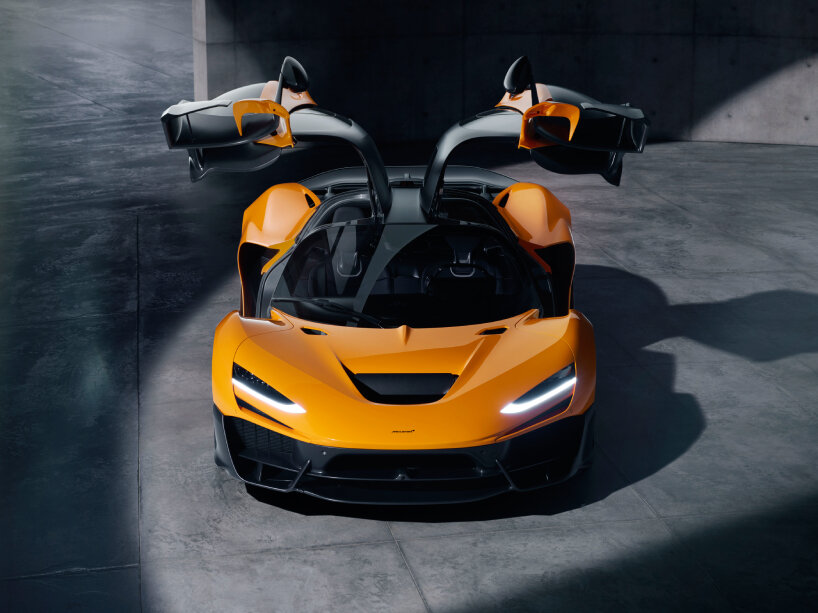
the supercar has an electric motor combined with its V8 combustion engine
The sides of the McLaren W1 hybrid supercar have large cut-outs around the doors, again for the airflow, and viewers can even see the front suspension arms through these outlets, allowing them to peek through the supercar’s mechanics. The most prominent feature on the side is a triangular large intake air ahead of the rear section of the car, which is inspired by Formula 1 cars and feeds the high-temperature radiators. The side mirrors are also designed for aerodynamics, placed far out to the sides on support blades. McLaren describes the W1 hybrid supercar’s rear bodywork as heavily haunched due to its muscular appearance.
There’s a detailed engine cover that sits under a flow diverter, which also holds the shark fin audio and navigation antennas. When viewed from above, the hybrid supercar’s form has a hammerhead-shaped nose and a tight teardrop-shaped cabin, which slowly opens up to the rear wing. It is here that the Anhedral doors are found. They open upwards, which is a signature McLaren feature, but instead of the traditional dihedral doors, which open with a scissor motion, the W1 has anhedral doors, which open in a slightly different way, similar to gull-wings.
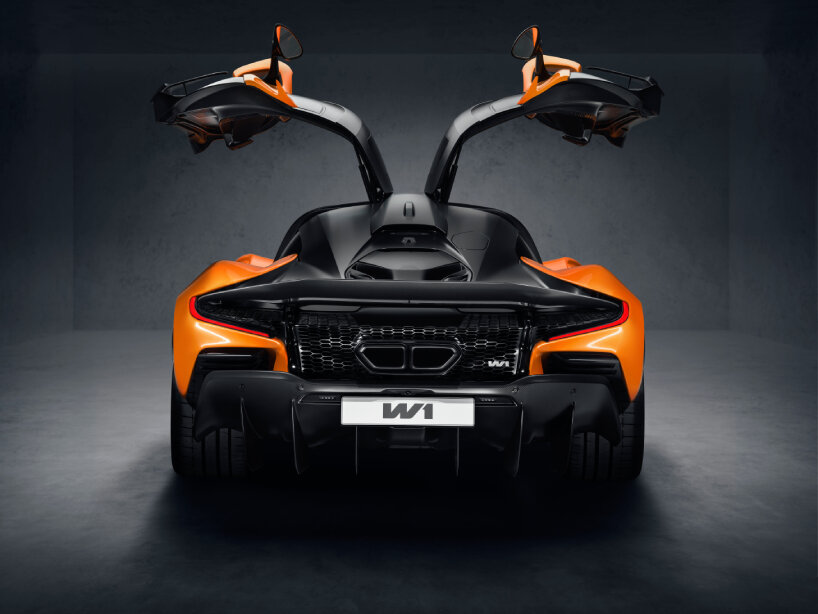
with W1, McLaren also debuts its ‘Anhedral’ doors, which is similar to a gull-wing style
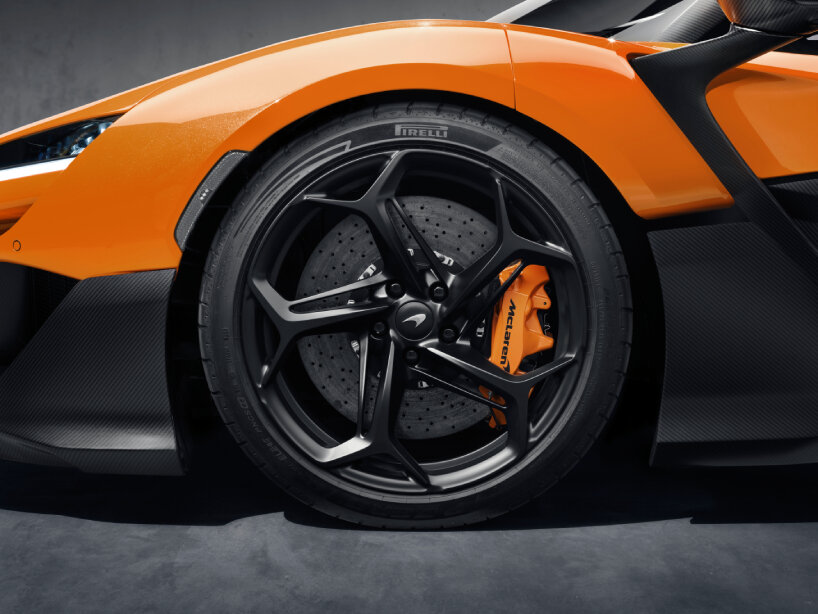
the use of the 3D-printed parts arises from the car manufacturer’s Formula 1 technology
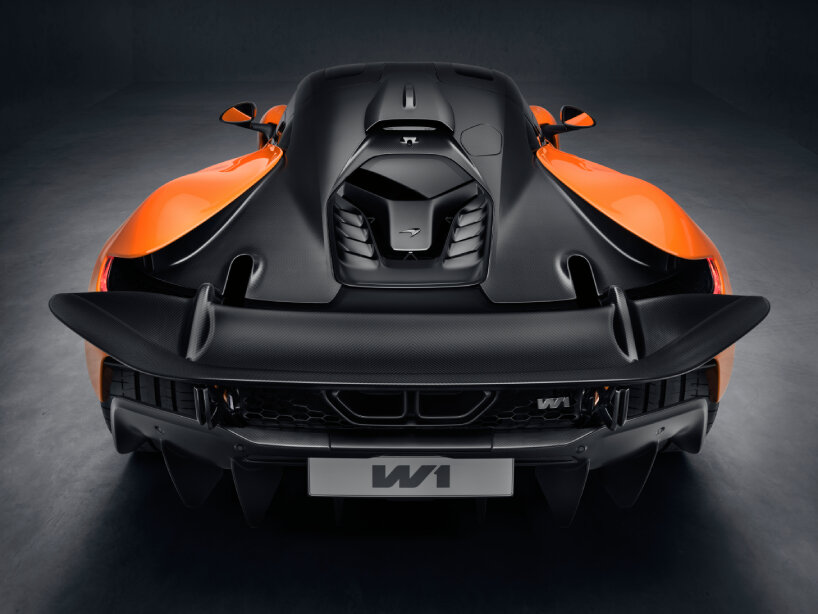
a small part of the Active Long Tail wing to give the driver perspective when reversing or parking







